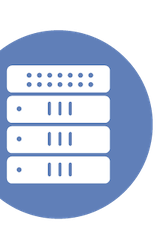AIStor – PromptObject, AIHub, and MCP Demos with MinIO
Event: Cloud Field Day 23
Appearance: MinIO Presents at Cloud Field Day 23
Company: MinIO
Video Links:
- Vimeo: AIStor – PromptObject, AIHub, and MCP Demos with MinIO
- YouTube: AIStor – PromptObject, AIHub, and MCP Demos with MinIO
Personnel: Dil Radhakrishnan
Dil Radhakrishnan presented MinIO’s AIStor capabilities at Cloud Field Day 23, focusing on how MinIO is adapting to AI workloads. The presentation demonstrated three key features: AI Hub, PromptObject, and Model Context Protocol (MCP) server. AI Hub provides a Hugging Face-compatible repository for securely storing private AI models and datasets within the AIStor environment. This enables developers to manage and deploy fine-tuned models without exposing them to the public, leveraging the familiar Hugging Face ecosystem.
The presentation then introduced PromptObject, which enables interaction with objects in AIStor using large language models (LLMs). By integrating GenAI capabilities directly into the S3 API, developers can use the “prompt” function to have the LLM extract specific data from unstructured objects, transforming it into structured JSON for easier application integration. This approach eliminates the need for separate RAG pipelines in many scenarios, as prompt objects simplify the process of interacting with single objects. Still, it can also be used in combination with a RAG implementation.
Finally, the presentation showcased the AI Store MCP server, which enables agentic workflows. The MCP server allows AI agents to interact with the data stored in MinIO. This was demonstrated using a cloud desktop, showing how an agent can list buckets, extract information from images, automatically tag data, and create visualizations of the AI Store cluster. This approach enhances data accessibility and facilitates automation in managing and analyzing data.







